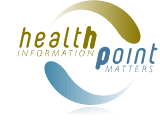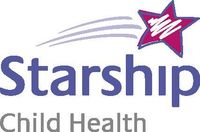Level 4
Starship Children's Health
2 Park Road
Grafton
Auckland

Starship Paediatric Spine Service

Street Address
Postal Address
Department of Orthopaedics
Private Bag 92024
Auckland Mail Centre
Auckland 1142
Contact Details
Outpatient appointments:
(09) 367 0000 ext 22492
Surgical booking enquiries:
(09) 367 0000 ext 22494
Nurse Specialist - Paediatric Spine
021938148
GP/External Specialist Help Desk: (09) 3072800
All referrals to Starship Paediatric Spine must be done through your family doctor or specialist. If you live outside the Auckland region, referrals must come via your local hospital.
Website
Neuromuscular Scoliosis
The term neuromuscular scoliosis is used to describe curvature of the spine in children with any disorder of the neurological system. Common categories include cerebral palsy, spina bifida, muscular dystrophies, spinal muscular atrophy, spinal cord injuries, arthrogryposis and so forth. The muscles of a child with a neuromuscular disorder are often weaker and therefore are not able to provide adequate support to the spine during the growing years. As the muscles and ligaments progressively weaken, they can no longer effectively support the spine so it begins to curve. These curves tend to be progressive, with the rate of progression becoming worse during rapid growth. For children confined to a wheel chair, progressive curves may affect the child's ability to be seated comfortably, thereby affecting their quality of life and function. Changes in posture place weight on structures unsuited to the stress, and full expansion of the chest cavity becomes difficult. This may impair breathing already made difficult by weakened respiratory muscles.
What is the treatment for neuromuscular scoliosis?
Children with a neuromuscular scoliosis have a curve that is more likely to increase in severity and therefore is more likely to require treatment. Spinal surgery is often necessary at a younger age due to faster progression of the scoliosis. Non-surgical treatments such as seating modification and bracing are not usually effective because they do not usually control curve progression. Braces are generally not well tolerated by children with a neuromuscular condition because they often restrict breathing and can cause pressure area problems.
(1) Observation
A curve of less than 20 degrees is considered mild. This means that nothing needs to be done at this stage. Regular clinical examinations and X-rays will be required to assess changes in the curve measurement. These check-ups are continued until your child is skeletally mature.
(2) Surgery
If the curve in your child’s spine continues to increase in severity (above 45 degrees), your doctor may recommend surgery. This is called a spinal fusion. A spinal fusion involves metal implants and bone graft. Spinal implants consist of a variety of metal rods, hooks, wires and screws, which are used to hold the correction of the spine whilst the bone fusion heals. The implants used depend on a number of factors including age of child, type and location of curve.
The aim of surgery is to:
- Correct or lessen the curvature and to stabilise the affected area of the spine
- Optimise / preserve lung function
- Decrease back pain and postural fatigue
- Improve sitting posture in a chair
- Prevent pressure areas that occur as a result of being tilted to one side in a chair.
Facts about neuromuscular scoliosis
- The younger the child at the time of diagnosis, the greater the risk of progression.
- These curves tend to be progressive, with the rate of progression becoming worse during rapid growth.
- In neuromuscular spinal deformities, progression occurs much more frequently than in idiopathic scoliosis.
- Progression often continues into adulthood.
- In general, the greater the neuromuscular involvement, the greater the likelihood and severity of scoliosis.
- Braces are poorly tolerated because they further restrict the thoracic (chest) muscles.
https://www.healthpoint.co.nz/public/spinal/starship-paediatric-spine-service/